Diagnosing fuel gauge inaccuracies can be efficiently achieved using DTS Monaco, a powerful diagnostic tool preferred by automotive professionals; DTS-MONACO.EDU.VN provides comprehensive support and training. By understanding the diagnostic process and leveraging the capabilities of DTS Monaco, you can resolve fuel gauge issues accurately. This article explores how to use this software for diagnosing and correcting these problems, ensuring reliable fuel level readings and optimizing your vehicle’s performance through accurate car coding and thorough automotive diagnostics.
Contents
- 1. Understanding Fuel Gauge Inaccuracies
- 1.1. What Causes Fuel Gauge Inaccuracies?
- 1.2. Why Is Accurate Fuel Measurement Important?
- 2. Introduction to DTS Monaco
- 2.1. What Is DTS Monaco?
- 2.2. Why Use DTS Monaco for Fuel Gauge Diagnostics?
- 2.3. Advantages of Learning from DTS-MONACO.EDU.VN
- 3. Prerequisites for Diagnosing Fuel Gauge Inaccuracies with DTS Monaco
- 3.1. Required Equipment and Software
- 3.2. Basic Knowledge of Vehicle Electrical Systems
- 3.3. Setting Up DTS Monaco for Diagnostics
- 4. Step-by-Step Guide to Diagnosing Fuel Gauge Inaccuracies Using DTS Monaco
- 4.1. Step 1: Connect to the Vehicle and Read DTCs
- 4.2. Step 2: Identify Relevant ECUs
- 4.3. Step 3: Access Live Data for Fuel Level Sensor
- 4.4. Step 4: Analyze Fuel Level Sensor Data
- 4.5. Step 5: Perform Actuator Tests
- 4.6. Step 6: Check Wiring and Connections
- 4.7. Step 7: Recalibrate Fuel Gauge (if necessary)
- 4.8. Step 8: Clear DTCs and Verify Repair
- 5. Advanced Diagnostic Techniques
- 5.1. Using DTS Monaco to Simulate Fuel Level Sensor Signals
- 5.2. Analyzing Fuel Consumption Data
- 5.3. Checking for Software Updates
- 6. Common Issues and Troubleshooting Tips
- 6.1. Fuel Gauge Stuck at Empty
- 6.2. Fuel Gauge Stuck at Full
- 6.3. Fluctuating Fuel Gauge Readings
- 6.4. Fuel Gauge Inaccurate After Fuel Tank Modification
- 7. Benefits of Professional Training at DTS-MONACO.EDU.VN
- 7.1. Comprehensive Curriculum
- 7.2. Hands-On Experience
- 7.3. Expert Instructors
- 7.4. Career Advancement
- 8. Staying Updated with DTS Monaco and Automotive Technology
- 8.1. Online Forums and Communities
- 8.2. Industry Publications and Websites
- 8.3. Advanced Training Courses
- 9. Conclusion: Optimizing Fuel Gauge Accuracy with DTS Monaco
- 9.1. Key Takeaways
- 9.2. Final Thoughts
- 10. Frequently Asked Questions (FAQs)
- 10.1. What is DTS Monaco and what is it used for?
- 10.2. Can DTS Monaco be used on all vehicle makes and models?
- 10.3. How do I connect DTS Monaco to my vehicle?
- 10.4. What is variant coding and how is it used in fuel gauge diagnostics?
- 10.5. How do I update the software on my vehicle’s ECUs using DTS Monaco?
- 10.6. What are some common DTCs related to fuel gauge inaccuracies?
- 10.7. How can I ensure the accuracy of fuel gauge readings after recalibration?
- 10.8. What are the benefits of taking a professional training course on DTS Monaco?
- 10.9. Where can I find reliable resources and support for DTS Monaco?
- 10.10. How often should I update my DTS Monaco software?
1. Understanding Fuel Gauge Inaccuracies
Fuel gauge inaccuracies can stem from various causes. Accurately diagnosing these issues requires understanding the underlying problems and the diagnostic tools available.
1.1. What Causes Fuel Gauge Inaccuracies?
Several factors can lead to a fuel gauge providing incorrect readings, including:
- Faulty Fuel Level Sensor: The sensor inside the fuel tank measures the fuel level and sends this information to the gauge. If the sensor is damaged or malfunctioning, it can provide inaccurate readings.
- Wiring Issues: Damaged, corroded, or loose wiring between the fuel level sensor and the fuel gauge can disrupt the signal, leading to incorrect readings.
- Gauge Malfunction: The fuel gauge itself may be faulty, displaying incorrect information even if the sensor is working correctly.
- Software Problems: In modern vehicles, the fuel gauge reading is often managed by the vehicle’s computer. Software glitches or incorrect programming can cause inaccuracies.
- Fuel Tank Modifications: Upgrading or modifying the fuel tank, such as installing a larger tank, can result in the fuel gauge not being properly calibrated.
1.2. Why Is Accurate Fuel Measurement Important?
Accurate fuel measurement is crucial for several reasons:
- Preventing Run-Outs: Knowing the precise fuel level prevents running out of fuel unexpectedly, which can be dangerous and inconvenient.
- Optimizing Fuel Efficiency: Accurate fuel data helps drivers monitor their fuel consumption and adjust driving habits to improve fuel efficiency.
- Avoiding Damage: Running a vehicle with very low fuel can damage the fuel pump, as it relies on fuel to stay cool. Accurate readings help avoid this.
- Proper Vehicle Management: Fleet managers and vehicle owners rely on accurate fuel readings for maintenance scheduling and overall vehicle management.
- Safety: Inaccurate fuel readings can lead to miscalculations about range, potentially causing drivers to become stranded in remote or unsafe locations.
2. Introduction to DTS Monaco
DTS Monaco is a powerful diagnostic and engineering software used in the automotive industry. It’s particularly useful for diagnosing and resolving complex issues, including fuel gauge inaccuracies.
2.1. What Is DTS Monaco?
DTS Monaco is a diagnostic, testing, and engineering software used primarily by automotive manufacturers and advanced repair facilities. According to a white paper from Daimler AG, DTS Monaco allows for in-depth analysis and modification of vehicle control units (ECUs). Its capabilities include:
- Diagnostics: Reading and clearing diagnostic trouble codes (DTCs).
- Flashing: Updating ECU software.
- Engineering Functions: Performing advanced modifications and calibrations.
- Data Logging: Recording vehicle data for analysis.
- Variant Coding: Changing vehicle configurations and parameters.
2.2. Why Use DTS Monaco for Fuel Gauge Diagnostics?
DTS Monaco offers several advantages for diagnosing fuel gauge inaccuracies:
- Comprehensive Access: Provides direct access to the vehicle’s ECUs, allowing you to read and modify fuel-related parameters.
- Detailed Diagnostics: Offers in-depth diagnostic capabilities to identify the root cause of the problem, whether it’s a sensor issue, wiring fault, or software glitch.
- Calibration and Coding: Allows you to calibrate the fuel gauge after modifications, such as installing a larger fuel tank.
- Real-Time Data: Provides real-time data monitoring to observe the fuel level sensor’s behavior and identify anomalies.
- Customization: Enables customization of fuel gauge settings to match specific vehicle configurations or driver preferences.
2.3. Advantages of Learning from DTS-MONACO.EDU.VN
For technicians in the USA looking to master DTS Monaco, DTS-MONACO.EDU.VN offers specialized training that provides significant advantages:
- Expert Instruction: Learn from industry experts with extensive experience in automotive diagnostics and DTS Monaco.
- Practical Training: Gain hands-on experience using DTS Monaco on real vehicles, ensuring you can apply your knowledge effectively.
- Comprehensive Curriculum: Access a structured curriculum covering basic to advanced DTS Monaco functions, specifically tailored to fuel gauge diagnostics and car coding.
- Latest Updates: Stay updated with the latest software versions, diagnostic techniques, and industry best practices.
- Support Network: Join a community of automotive professionals for ongoing support and knowledge sharing.
3. Prerequisites for Diagnosing Fuel Gauge Inaccuracies with DTS Monaco
Before you begin diagnosing fuel gauge inaccuracies using DTS Monaco, ensure you have the necessary tools, knowledge, and setup.
3.1. Required Equipment and Software
To effectively use DTS Monaco for fuel gauge diagnostics, you’ll need:
- DTS Monaco Software: Ensure you have a licensed and updated version of the DTS Monaco software installed on your computer.
- Diagnostic Interface: A compatible diagnostic interface (e.g., Mercedes-Benz XENTRY Connect) to connect your computer to the vehicle’s OBD-II port.
- Laptop: A laptop with sufficient processing power, memory, and battery life to run DTS Monaco smoothly.
- Vehicle Battery Charger: To maintain a stable voltage during the diagnostic process, preventing data corruption.
- Multimeter: For testing wiring continuity and voltage levels.
- OBD-II Extension Cable: To provide easier access to the OBD-II port.
3.2. Basic Knowledge of Vehicle Electrical Systems
A fundamental understanding of vehicle electrical systems is essential for effective diagnostics. Key areas include:
- Wiring Diagrams: Ability to read and interpret vehicle-specific wiring diagrams to trace circuits and identify potential faults.
- OBD-II System: Knowledge of the On-Board Diagnostics II (OBD-II) system, including diagnostic trouble codes (DTCs) and their meanings.
- CAN Bus Communication: Understanding the Controller Area Network (CAN) bus communication protocol used by modern vehicles.
- Sensor Operation: Familiarity with the operation of fuel level sensors and their role in the fuel gauge system.
- Voltage and Continuity Testing: Skills in using a multimeter to test voltage levels, continuity, and resistance in electrical circuits.
3.3. Setting Up DTS Monaco for Diagnostics
Proper setup of DTS Monaco is crucial for successful diagnostics. Follow these steps:
- Install DTS Monaco: Install the DTS Monaco software on your laptop, following the installation instructions provided by the software vendor.
- Connect Diagnostic Interface: Connect the diagnostic interface to your laptop via USB or Bluetooth and install the necessary drivers.
- Configure DTS Monaco: Configure DTS Monaco to recognize your diagnostic interface. This typically involves selecting the appropriate interface type and communication settings.
- Vehicle Connection: Connect the diagnostic interface to the vehicle’s OBD-II port. Ensure the ignition is switched on but the engine is not running.
- Select Vehicle: In DTS Monaco, select the correct vehicle model, year, and engine type.
- Establish Communication: Establish communication with the vehicle’s ECUs. This may involve entering a security code or performing an initial scan.
4. Step-by-Step Guide to Diagnosing Fuel Gauge Inaccuracies Using DTS Monaco
Follow these steps to diagnose fuel gauge inaccuracies using DTS Monaco:
4.1. Step 1: Connect to the Vehicle and Read DTCs
- Connect: Connect the diagnostic interface to the vehicle’s OBD-II port and your laptop.
- Start DTS Monaco: Launch DTS Monaco and select the correct vehicle model and engine type.
- Establish Connection: Establish communication with the vehicle’s ECUs.
- Read DTCs: Navigate to the diagnostic section and read diagnostic trouble codes (DTCs) related to the fuel system.
 Screenshot_20230211_060001_ThinkDiag%2B-X2.jpg
Screenshot_20230211_060001_ThinkDiag%2B-X2.jpg
4.2. Step 2: Identify Relevant ECUs
Identify the ECUs responsible for managing the fuel gauge and fuel level sensor. Common ECUs include:
- Instrument Cluster (IC): Displays the fuel gauge reading.
- Engine Control Unit (ECU): Monitors the fuel level sensor and controls fuel-related functions.
- Body Control Module (BCM): Manages various vehicle functions, including fuel-related data.
4.3. Step 3: Access Live Data for Fuel Level Sensor
Access the live data stream for the fuel level sensor in DTS Monaco. This allows you to monitor the sensor’s output in real-time.
- Select ECU: Choose the appropriate ECU (e.g., ECU or IC) in DTS Monaco.
- Access Live Data: Navigate to the live data or parameter identification (PID) section.
- Select Fuel Level Parameter: Look for parameters such as “Fuel Level,” “Fuel Tank Level,” or similar.
- Monitor Data: Observe the fuel level reading as you add or remove fuel from the tank.
4.4. Step 4: Analyze Fuel Level Sensor Data
Analyze the fuel level sensor data to identify any anomalies or inconsistencies.
- Check for Range: Ensure the sensor reading changes smoothly as the fuel level changes.
- Look for Jumps: Identify any sudden jumps or drops in the reading, which could indicate a faulty sensor or wiring issue.
- Verify Accuracy: Compare the sensor reading to the actual fuel level in the tank. A significant discrepancy indicates a problem.
4.5. Step 5: Perform Actuator Tests
Use DTS Monaco to perform actuator tests on the fuel gauge and fuel level sensor.
- Select ECU: Choose the appropriate ECU (e.g., IC) in DTS Monaco.
- Access Actuator Tests: Navigate to the actuator tests or output control section.
- Test Fuel Gauge: Activate the fuel gauge test to check if the gauge moves correctly.
- Test Fuel Pump: Activate the fuel pump to verify it operates correctly and provides the correct fuel pressure.
4.6. Step 6: Check Wiring and Connections
Inspect the wiring and connections between the fuel level sensor, ECUs, and fuel gauge.
- Locate Wiring Diagram: Refer to the vehicle-specific wiring diagram to identify the correct wires and connectors.
- Inspect Wires: Check for damaged, corroded, or loose wires.
- Test Continuity: Use a multimeter to test the continuity of the wires between the sensor and ECUs.
- Check Voltage: Verify the voltage levels at the sensor and ECUs, ensuring they are within the specified range.
4.7. Step 7: Recalibrate Fuel Gauge (if necessary)
If you’ve made modifications to the fuel system, such as installing a larger fuel tank, you may need to recalibrate the fuel gauge using DTS Monaco.
- Access Variant Coding: Navigate to the variant coding or parameter setting section in DTS Monaco.
- Select Fuel Tank Size: Look for parameters related to fuel tank size or fuel gauge calibration.
- Enter New Value: Enter the correct fuel tank size or calibration value.
- Save Changes: Save the changes and verify the fuel gauge reading.
4.8. Step 8: Clear DTCs and Verify Repair
After completing the diagnostic and repair process, clear the DTCs and verify that the fuel gauge is now functioning correctly.
- Clear DTCs: Navigate to the diagnostic section in DTS Monaco and clear any stored DTCs.
- Verify Repair: Monitor the fuel gauge reading over time to ensure it remains accurate.
- Test Fuel Consumption: Drive the vehicle and monitor fuel consumption to ensure it aligns with the fuel gauge reading.
5. Advanced Diagnostic Techniques
For more complex fuel gauge issues, consider these advanced diagnostic techniques:
5.1. Using DTS Monaco to Simulate Fuel Level Sensor Signals
DTS Monaco can simulate fuel level sensor signals to test the functionality of the fuel gauge and related ECUs.
- Access Simulation Mode: Navigate to the simulation or test signal section in DTS Monaco.
- Select Fuel Level Sensor: Choose the fuel level sensor signal to simulate.
- Set Signal Value: Enter a specific fuel level value to simulate.
- Monitor Gauge: Observe the fuel gauge reading to verify it responds correctly to the simulated signal.
5.2. Analyzing Fuel Consumption Data
Analyze fuel consumption data to identify discrepancies between the fuel gauge reading and actual fuel usage.
- Access Fuel Consumption Data: Navigate to the fuel consumption data section in DTS Monaco or the vehicle’s trip computer.
- Monitor Fuel Usage: Observe the fuel consumption rate and total fuel used over a specific period.
- Compare Readings: Compare the fuel consumption data to the fuel gauge reading. A significant difference indicates a potential issue.
5.3. Checking for Software Updates
Ensure that the vehicle’s ECUs have the latest software updates. Outdated software can cause fuel gauge inaccuracies.
- Check for Updates: Use DTS Monaco to check for available software updates for the relevant ECUs.
- Install Updates: Install any available updates, following the instructions provided by the software vendor.
- Verify Repair: After installing updates, verify that the fuel gauge is now functioning correctly.
6. Common Issues and Troubleshooting Tips
Here are some common fuel gauge issues and troubleshooting tips:
6.1. Fuel Gauge Stuck at Empty
- Check Sensor: Test the fuel level sensor for continuity and resistance.
- Inspect Wiring: Look for damaged or corroded wires between the sensor and ECUs.
- Test Gauge: Perform an actuator test on the fuel gauge to verify it moves correctly.
6.2. Fuel Gauge Stuck at Full
- Check Sensor: Test the fuel level sensor for proper operation.
- Inspect Wiring: Look for shorts in the wiring between the sensor and ECUs.
- Recalibrate: Recalibrate the fuel gauge if necessary.
6.3. Fluctuating Fuel Gauge Readings
- Check Sensor: Test the fuel level sensor for smooth and consistent operation.
- Inspect Wiring: Look for loose or corroded connections.
- Test Ground: Verify the ground connection for the fuel level sensor is secure and free of corrosion.
6.4. Fuel Gauge Inaccurate After Fuel Tank Modification
- Recalibrate: Recalibrate the fuel gauge to match the new fuel tank size.
- Verify Settings: Double-check the fuel tank size and calibration settings in DTS Monaco.
7. Benefits of Professional Training at DTS-MONACO.EDU.VN
Investing in professional training at DTS-MONACO.EDU.VN can significantly enhance your diagnostic capabilities and career prospects.
7.1. Comprehensive Curriculum
DTS-MONACO.EDU.VN offers a comprehensive curriculum covering all aspects of DTS Monaco, from basic operation to advanced diagnostic techniques.
- Basic Training: Covers the fundamentals of DTS Monaco, including installation, setup, and basic diagnostic functions.
- Advanced Diagnostics: Focuses on advanced diagnostic techniques, such as reading and clearing DTCs, accessing live data, and performing actuator tests.
- Car Coding: Teaches you how to perform car coding and variant coding using DTS Monaco, including calibrating the fuel gauge after fuel tank modifications.
- Software Updates: Provides training on how to update ECU software using DTS Monaco.
7.2. Hands-On Experience
Gain hands-on experience using DTS Monaco on real vehicles. This practical training ensures you can apply your knowledge effectively in real-world situations.
- Live Demonstrations: Watch live demonstrations of DTS Monaco being used to diagnose and repair fuel gauge inaccuracies.
- Practical Exercises: Perform practical exercises on training vehicles under the guidance of experienced instructors.
- Real-World Scenarios: Work through real-world diagnostic scenarios to develop your problem-solving skills.
7.3. Expert Instructors
Learn from industry experts with extensive experience in automotive diagnostics and DTS Monaco.
- Certified Trainers: Receive instruction from certified trainers with years of experience in the automotive industry.
- Industry Knowledge: Benefit from the instructors’ in-depth knowledge of vehicle electrical systems, diagnostic techniques, and DTS Monaco.
- Personalized Support: Receive personalized support and guidance from the instructors to help you master DTS Monaco.
7.4. Career Advancement
Mastering DTS Monaco can open up new career opportunities and increase your earning potential.
- Enhanced Skills: Develop advanced diagnostic skills that make you a valuable asset to any automotive repair facility.
- Increased Earning Potential: Command a higher salary as a skilled DTS Monaco technician.
- Career Opportunities: Pursue career opportunities as a diagnostic specialist, car coder, or automotive engineer.
8. Staying Updated with DTS Monaco and Automotive Technology
The automotive industry is constantly evolving, so it’s essential to stay updated with the latest technologies and diagnostic techniques.
8.1. Online Forums and Communities
Participate in online forums and communities to share knowledge, ask questions, and learn from other automotive professionals.
- DTS Monaco Forums: Join forums dedicated to DTS Monaco to discuss tips, tricks, and troubleshooting techniques.
- Automotive Diagnostic Forums: Participate in general automotive diagnostic forums to stay updated with the latest industry trends.
8.2. Industry Publications and Websites
Read industry publications and websites to stay informed about new technologies, diagnostic tools, and repair techniques.
- Automotive Engineering International: Provides in-depth coverage of automotive technology and engineering.
- Motor Age: Offers practical advice and tips for automotive technicians.
- SearchAutoParts.com: Provides technical articles and product reviews for automotive professionals.
8.3. Advanced Training Courses
Continue to invest in advanced training courses to expand your knowledge and skills.
- DTS-MONACO.EDU.VN: Offers advanced training courses on DTS Monaco and other automotive diagnostic tools.
- SAE International: Provides training courses and certifications in automotive engineering and technology.
- ASE Certifications: Pursue Automotive Service Excellence (ASE) certifications to demonstrate your knowledge and skills.
9. Conclusion: Optimizing Fuel Gauge Accuracy with DTS Monaco
Diagnosing fuel gauge inaccuracies using DTS Monaco requires a combination of technical knowledge, diagnostic skills, and the right tools. By following the steps outlined in this guide and staying updated with the latest technologies, you can accurately diagnose and resolve fuel gauge issues, ensuring reliable fuel level readings and optimizing your vehicle’s performance.
9.1. Key Takeaways
- Fuel gauge inaccuracies can stem from various causes, including faulty sensors, wiring issues, and software problems.
- DTS Monaco is a powerful diagnostic tool for diagnosing and resolving fuel gauge inaccuracies.
- Proper setup of DTS Monaco and a basic understanding of vehicle electrical systems are essential for effective diagnostics.
- Follow a step-by-step guide to diagnose fuel gauge issues, including reading DTCs, accessing live data, and performing actuator tests.
- Consider advanced diagnostic techniques, such as simulating fuel level sensor signals and analyzing fuel consumption data.
- Stay updated with the latest technologies and diagnostic techniques by participating in online forums, reading industry publications, and investing in advanced training courses.
- Professional training at DTS-MONACO.EDU.VN can significantly enhance your diagnostic capabilities and career prospects.
9.2. Final Thoughts
Accurate fuel measurement is crucial for preventing run-outs, optimizing fuel efficiency, and ensuring safe vehicle operation. With the help of DTS Monaco and proper training, you can confidently diagnose and resolve fuel gauge inaccuracies, providing your customers with reliable and accurate fuel level readings.
Ready to take your automotive diagnostic skills to the next level? Visit DTS-MONACO.EDU.VN to learn more about our comprehensive DTS Monaco training courses and start your journey towards becoming a skilled automotive diagnostic specialist. Contact us today at Address: 275 N Harrison St, Chandler, AZ 85225, United States or Whatsapp: +1 (641) 206-8880.
10. Frequently Asked Questions (FAQs)
10.1. What is DTS Monaco and what is it used for?
DTS Monaco is a diagnostic, testing, and engineering software used primarily by automotive manufacturers and advanced repair facilities for in-depth analysis and modification of vehicle control units (ECUs). It’s used for diagnostics, flashing, engineering functions, data logging, and variant coding.
10.2. Can DTS Monaco be used on all vehicle makes and models?
DTS Monaco is primarily designed for Mercedes-Benz vehicles, but it can also be used on other makes and models with the appropriate diagnostic interface and vehicle-specific data.
10.3. How do I connect DTS Monaco to my vehicle?
You connect DTS Monaco to your vehicle using a compatible diagnostic interface (e.g., Mercedes-Benz XENTRY Connect) connected to your laptop via USB or Bluetooth. The interface then connects to the vehicle’s OBD-II port.
10.4. What is variant coding and how is it used in fuel gauge diagnostics?
Variant coding is the process of changing vehicle configurations and parameters. In fuel gauge diagnostics, it’s used to recalibrate the fuel gauge after modifications, such as installing a larger fuel tank, ensuring accurate readings.
10.5. How do I update the software on my vehicle’s ECUs using DTS Monaco?
To update ECU software, you need to use the flashing function in DTS Monaco. Ensure you have the correct software files for your vehicle and follow the instructions provided by the software vendor to perform the update safely.
10.6. What are some common DTCs related to fuel gauge inaccuracies?
Common DTCs related to fuel gauge inaccuracies include codes related to the fuel level sensor, wiring issues, and ECU malfunctions. Examples include “P0460 Fuel Level Sensor Circuit Malfunction” and related codes.
10.7. How can I ensure the accuracy of fuel gauge readings after recalibration?
After recalibration, monitor the fuel gauge reading over time and compare it to the actual fuel level in the tank. Drive the vehicle and monitor fuel consumption to ensure it aligns with the fuel gauge reading.
10.8. What are the benefits of taking a professional training course on DTS Monaco?
A professional training course provides expert instruction, hands-on experience, a comprehensive curriculum, and career advancement opportunities, ensuring you can effectively use DTS Monaco for automotive diagnostics and car coding.
10.9. Where can I find reliable resources and support for DTS Monaco?
You can find reliable resources and support on online forums, industry publications, and through professional training courses like those offered at DTS-MONACO.EDU.VN.
10.10. How often should I update my DTS Monaco software?
You should update your DTS Monaco software regularly to ensure you have the latest features, bug fixes, and vehicle-specific data. Check for updates on the software vendor’s website and install them as soon as they are available.
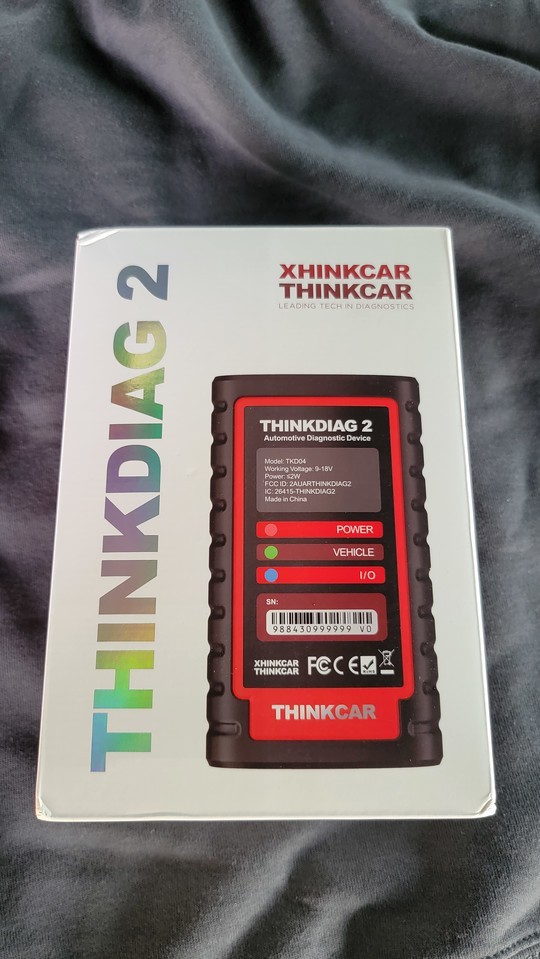 20230210_123342-X2.jpg
20230210_123342-X2.jpg
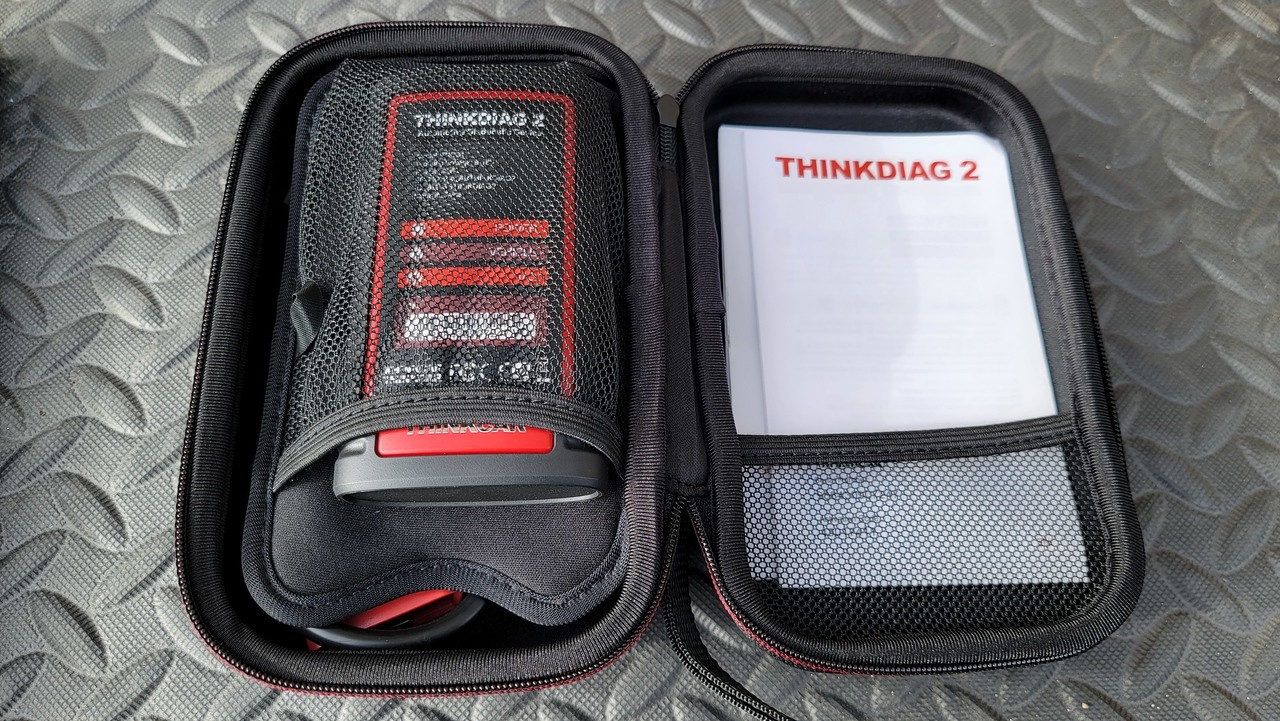 20230210_123515-X2.jpg
20230210_123515-X2.jpg
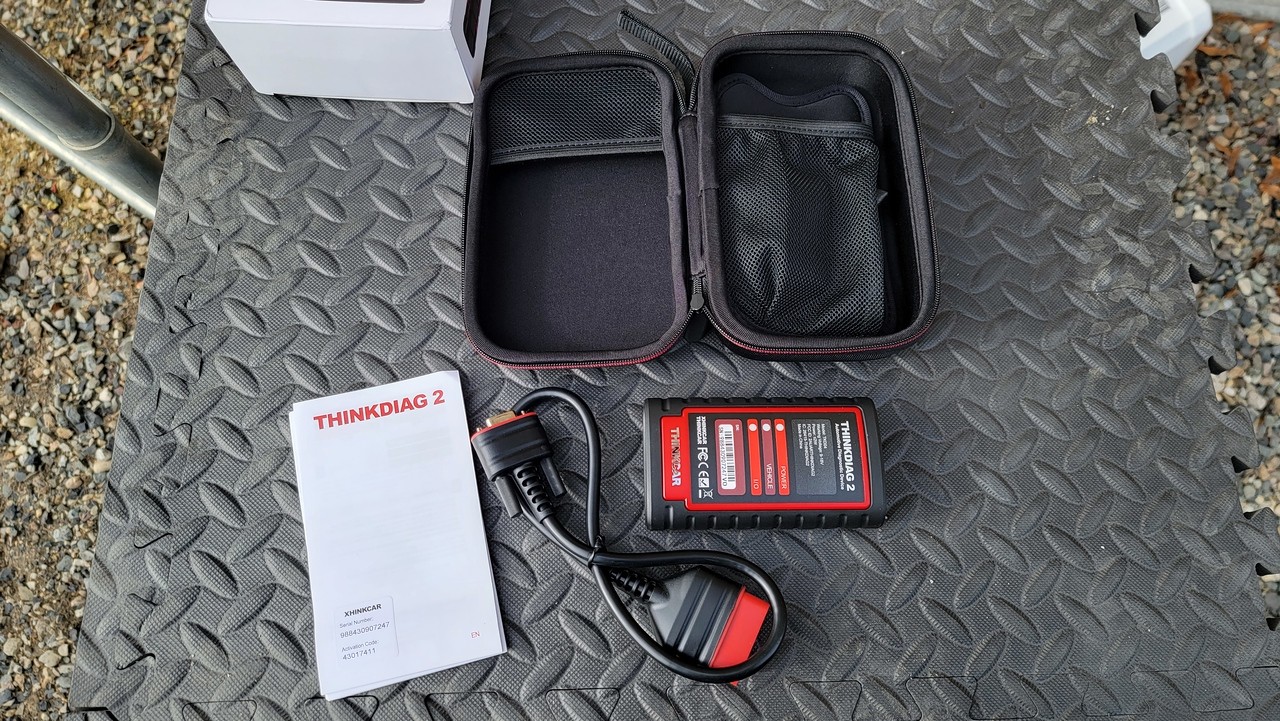 20230210_123545-X2.jpg
20230210_123545-X2.jpg
 20230210_123549-X2.jpg
20230210_123549-X2.jpg
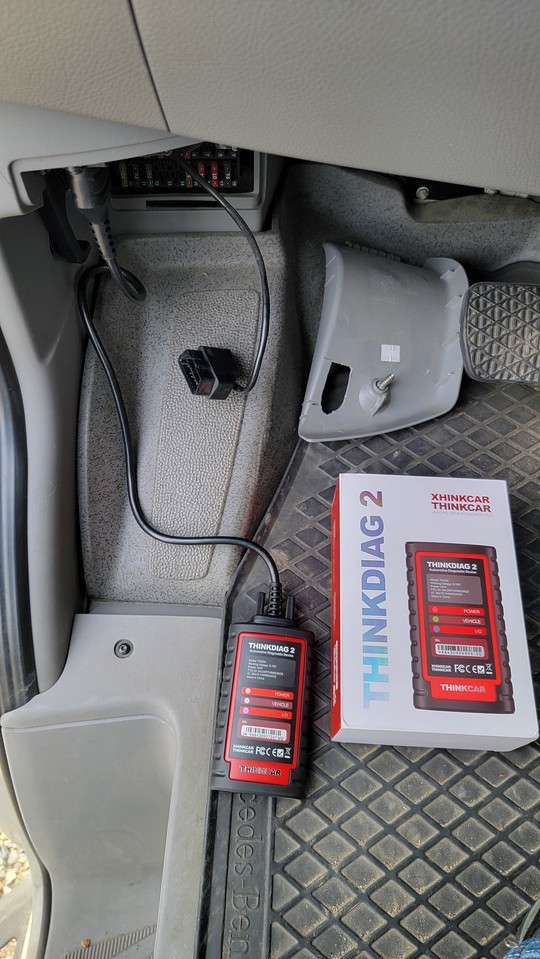 20230210_124842-X2.jpg
20230210_124842-X2.jpg
 20230210_164221-X2.jpg
20230210_164221-X2.jpg
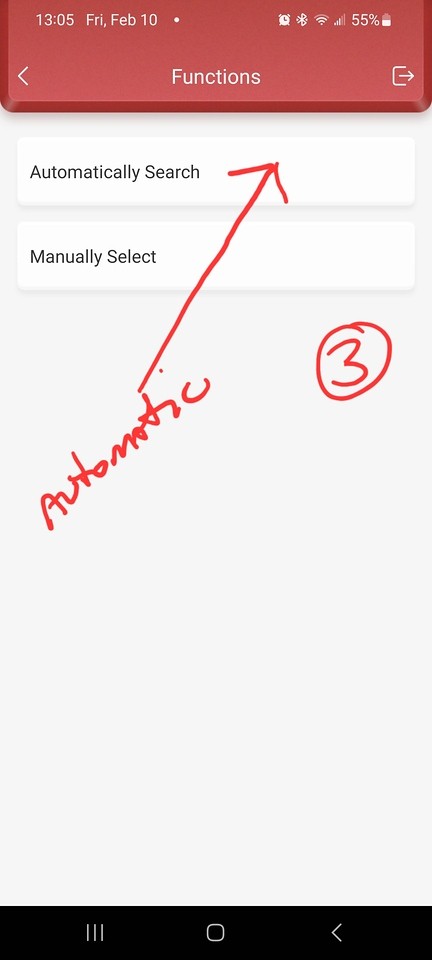 20230210_164248-X2.jpg
20230210_164248-X2.jpg
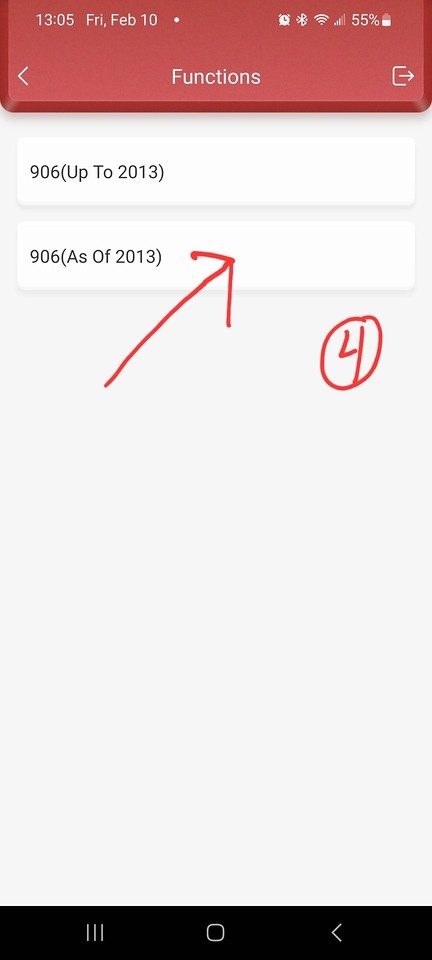 20230210_164319-X2.jpg
20230210_164319-X2.jpg
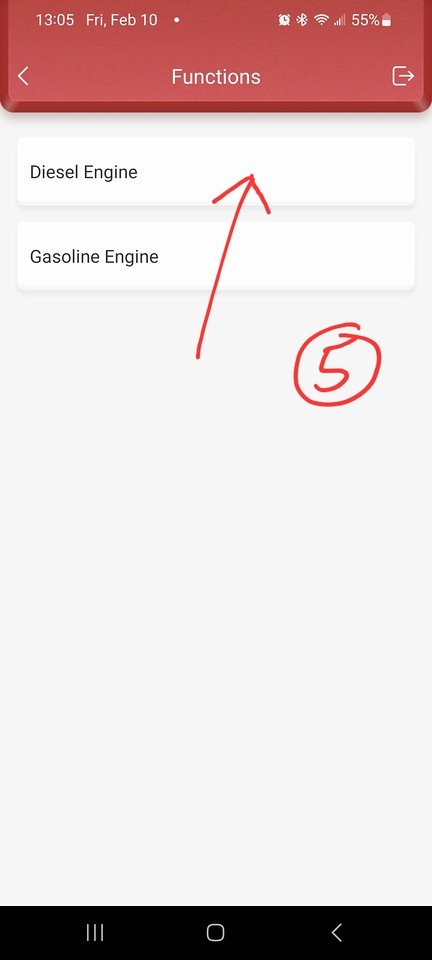 20230210_164337-X2.jpg
20230210_164337-X2.jpg
 20230210_164404-X2.jpg
20230210_164404-X2.jpg
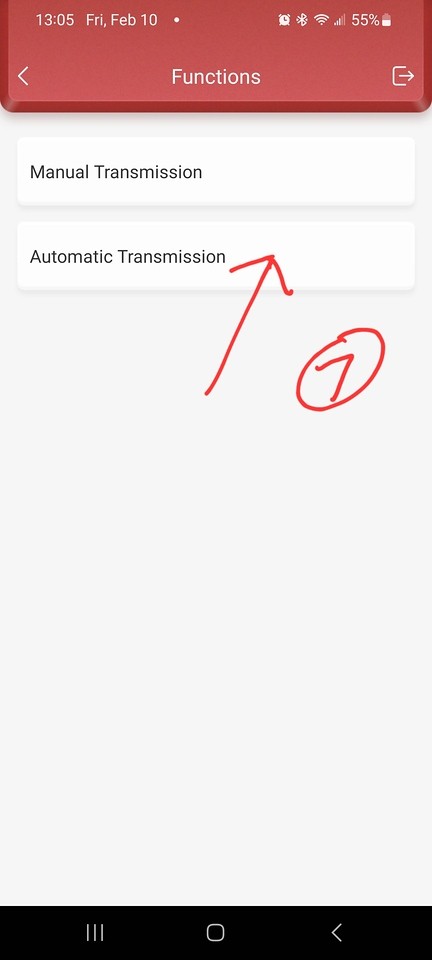 20230210_164433-X2.jpg
20230210_164433-X2.jpg
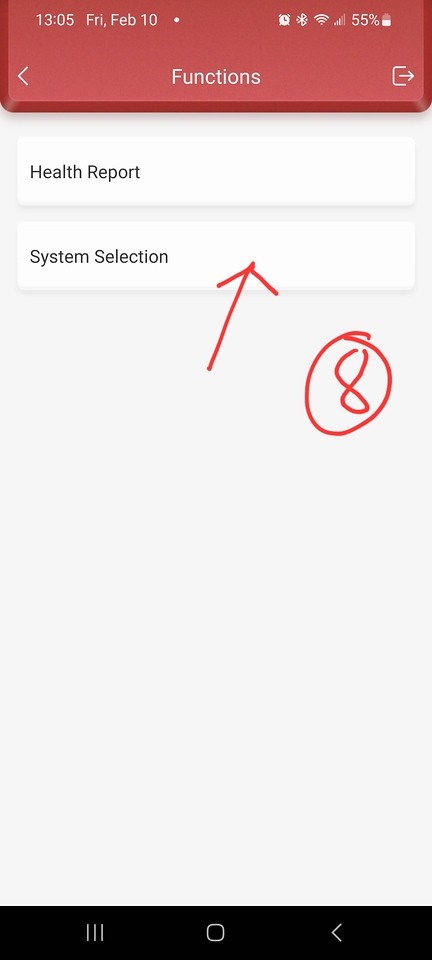 20230210_164454-X2.jpg
20230210_164454-X2.jpg
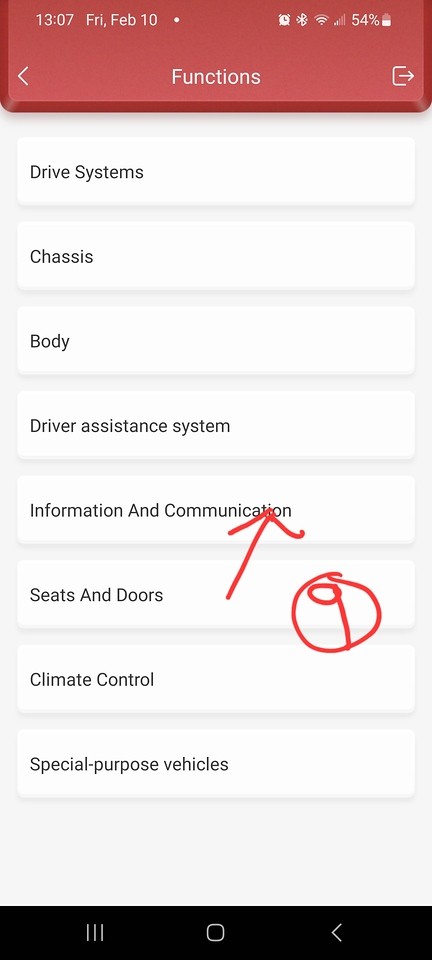 20230210_164519-X2.jpg
20230210_164519-X2.jpg
 20230210_164554-X2.jpg
20230210_164554-X2.jpg